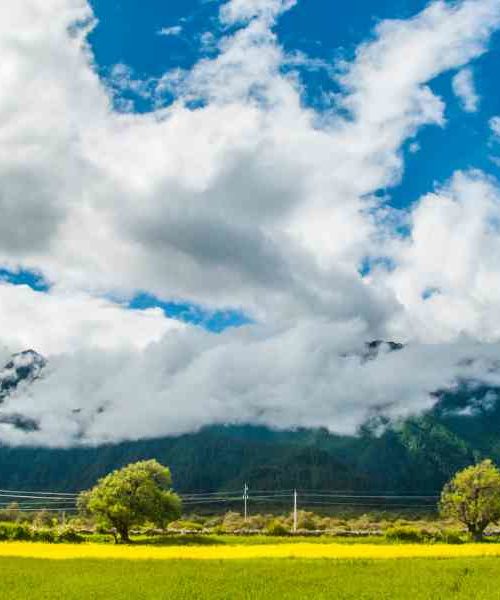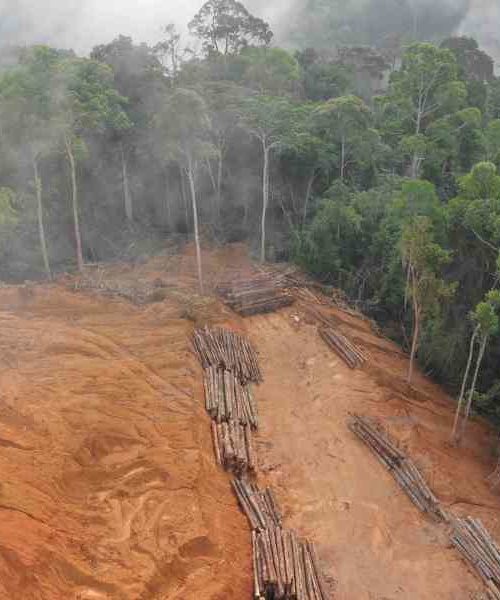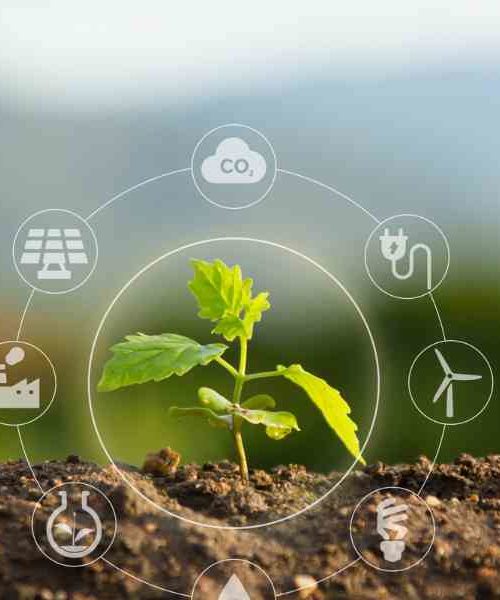Global warming has a lot of effects on the environment, and it’s important to be aware of them. From rising sea levels to melting glaciers, here are 15 environmental effects of global warming that you should know about.
This blog will discuss the 15 environmental effects of global warming. As temperatures around the world rise, the environment and all its inhabitants are affected.
From rising temperatures to increased storms and flooding, global warming is having a dramatic impact on our environment. This blog will help readers understand how global warming is affecting our planet and how we can work together to help prevent further damage.
List of 15 Environment Effects of Global Warming
1. Rising Temperatures
The rise in global temperatures due to global warming is one of the most immediate and obvious consequences. The average global temperature has increased by 1.1 degrees Celsius since the pre-industrial era.
This rise in heat can lead to longer and hotter heat waves, more frequent and intense droughts, and heavier rainfall. It can also cause temperatures to become more extreme and disrupt the usual balance of nature, leading to further climate change. As temperatures continue to rise, we can expect to see an increase in weather damage, such as more frequent and intense storms, wildfires, flooding, and droughts – all of which can have devastating effects on our environment.
2. Temperature Extremes
Temperature extremes are one of the most significant effects of global warming. Higher temperatures can lead to more frequent and more severe extreme weather events such as heat waves, floods, and droughts that can have serious impacts on human health, the environment, and communities.
Warmer temperatures on land also lead to reduced snowpack, earlier snowmelt, and increased evaporation of water from freshwater bodies. This can further exacerbate water shortages in already water-stressed regions.
The ocean also experiences temperature extremes as a result of global warming. An increase in sea surface temperature as well as ocean temperatures at greater depths is causing disruption to marine ecosystems and making them more vulnerable to the effects of climate change.
3. Extreme Weather
Extreme weather is an increasingly common consequence of global warming. As the earth’s temperature rises, more evaporation leads to more moisture in the atmosphere, which can lead to heavier rainfall and more frequent and intense heatwaves. Scientists have observed that the rainfall from events like Hurricane Harvey have increased by 15%, while heatwaves now account for 40% of all extreme weather events, followed by rainfall or flooding at 20% and droughts at 15%. It’s important to understand how these changes in climate are impacting life on earth, both human and animal, and what steps can be taken to mitigate their effects.
4. Ice Melt
Ice melt is one of the most pressing environmental effects of global warming. As temperatures rise, ice in glaciers, ice caps, and sea ice melts at an alarming rate. As a result, more water flows to the seas, causing ocean water to warm and expand in volume.
This meltwater also causes sea levels to rise, leading to potential flooding, habitat destruction, and other problems. In addition, fewer bright surfaces are available to reflect sunlight back into the atmosphere.
This amplifies global warming and further exacerbates the problem of ice melt. It is essential that we take steps to reduce global warming in order to minimize the effects of ice melt on our environment and planet.
5. Sea Levels and Ocean Acidification
Climate change is having a significant effect on the world’s oceans. One of the most profound effects is the rise in sea levels due to melting ice caps and glaciers.
This has a number of consequences, including the displacement of people living in coastal communities and damage to coastal infrastructure.
The rise in sea levels is also exacerbating ocean acidification, which is caused by increased levels of carbon dioxide in the atmosphere. This, in turn, affects marine ecosystems, making it difficult for some species to survive. Ocean acidification also affects coral reefs, which are extremely sensitive to changes in pH levels. As these reefs die off, they can no longer provide habitats for fish and other marine life, leading to further changes in marine ecosystems.
6. Plants and Animals
Global warming has a significant direct effect on terrestrial animals, impacting their life cycles and ecosystems. Rising temperatures can lead to habitat loss, as vegetation, food sources, access to water and other necessary resources become unavailable. This can result in the displacement of animals and even the extinction of certain species.
Temperature extremes can also be hazardous for some species, as well as extreme weather, ice melt and sea level rise. Research is being conducted to better understand how climate change affects plants and animals, helping to inform decisions about conservation and wildlife management strategies.
7. Social Effects
As the climate continues to change, the social effects of global warming become more and more apparent. From displacement of people to health concerns, the effects of warming temperatures and extreme weather on society are undeniable. As temperatures rise, more people are forced to leave their homes and seek refuge in more temperate climates. This can lead to overcrowding and cultural displacement, as well as increased poverty for those who are displaced. Additionally, health concerns increase as air quality decreases due to higher temperatures and extreme weather.
Heat waves cause heat stroke and other illnesses, while floods bring water-borne diseases. Global warming is having a direct impact on society in many ways, both positively and negatively. It is essential that we continue to take steps to reduce our carbon footprint in order to mitigate these effects.
8. Wildfires
Wildfires are an increasingly common environmental effect of global warming. Rising temperatures, a key indicator of climate change, evaporate more moisture from the ground and make vegetation more flammable.
This leads to longer fire seasons, larger burns, and increased wildfire risk. These wildfires are not only destructive to the environment, but can also have serious health consequences due to the gaseous air pollutants they produce. In addition to particulate matter, ozone and other dangerous gases can be released into the atmosphere, leading to respiratory and other health issues for those living near wildland areas.
It is essential that we take steps to reduce our contributions to global warming in order to protect our environment and our health from the devastating effects of wildfires.
9. Droughts
Droughts are one of the most concerning environmental effects of global warming. Warmer temperatures enhance evaporation, which reduces surface water and dries out soils and vegetation.
This can lead to an increase in areas that are prone to drought, resulting in a lack of access to clean drinking water, out-of-control wildfires, dust storms, extreme heat events, and other forms of destruction.
Drought conditions can have a devastating effect on communities and their environment, leading to displacement of people and disruption of agriculture. As global temperatures continue to rise due to climate change, the number of areas affected by drought is expected to increase significantly. To prevent this from happening, it is essential that we make efforts to reduce our carbon emissions and mitigate the effects of global warming on our climate.
10. Increase in Storms
As global temperatures continue to rise, it is expected that the number and intensity of storms will also increase. Higher temperatures can lead to more energy in the atmosphere and make storms stronger, as well as more frequent.
Storms that do occur are likely to be more intense and cause more damage. In addition, warmer air holds more moisture, leading to floods and landslides. In the US, hurricanes are expected to become more intense and destructive due to rising sea surface temperatures. As sea levels continue to rise, flooding is becoming a greater concern in coastal areas. It is important for communities to be aware of the potential risks associated with increased storm activity, and be prepared for potential disasters.
11. Flooding
Flooding is one of the most serious environmental effects of global warming. As temperatures rise, more frequent and severe weather patterns can cause heavy rain and flooding. In addition, the melting of ice around the world can cause sea levels to rise, further exacerbating the risk of flooding in coastal regions.
Floods can cause significant damage to property, infrastructure, and ecosystems, as well as displacement and even loss of life. It is essential for governments, businesses, and individuals to plan for and take appropriate measures to reduce the risks associated with flooding.
12. Health Concerns
The health effects of global warming are far reaching and affect people all over the world. As temperatures rise, so too do the number of extreme weather events, such as heat waves, floods, droughts and storms.
These extreme weather events can lead to an increase in respiratory and cardiovascular diseases, injuries and premature deaths. In addition, climate change can affect access to clean air, safe drinking water, sufficient food and secure shelter – all of which are essential for good health. Consequently, global warming can cause a range of health problems in vulnerable populations such as children and the elderly.
As temperatures continue to rise it is becoming increasingly important to take steps to protect our health from the dangers of global warming.
13. Agriculture Disruption
Climate change has had a direct impact on the agricultural industry around the world. Rising temperatures, extreme weather events, floods, and droughts have all had a profound effect on crop yields and nutritional quality. In addition, warmer temperatures have extended the growing season in some areas and shortened it in others, leading to an overall decrease in crop quality and quantity.
This has had an immense impact on food availability, access to food, and even the quality of food being produced. Climate change has also led to an increase in pests and diseases which can further exacerbate these problems. Such changes have affected farmers and their livelihoods, as well as the communities that rely on farmers for sustenance. With the right strategies in place, however, it is possible to reduce some of the negative impacts of climate change on agriculture.
14. Displacement of People
Climate change is having a major impact on people around the world, including the displacement of millions of individuals. Flooding, hurricanes, desertification, and even the “sinking” of stretches of land are some of the causes of displacement triggered by climate change. In many cases, people are forced to move internally, rather than crossing borders.
As global warming continues to increase, it exacerbates water shortages in already water-stressed regions. Even if global surface temperature is stabilized, sea levels will continue to rise and the ocean will continue to absorb excess heat from the atmosphere for decades to come.
The effects of climate change on human migration could be one of its greatest impacts with millions being displaced due to shoreline erosion, coastal flooding and other climate-related issues.
Those who are displaced often face economic hardship, as well as psychological and physical trauma due to the disruption of their lives and communities.







